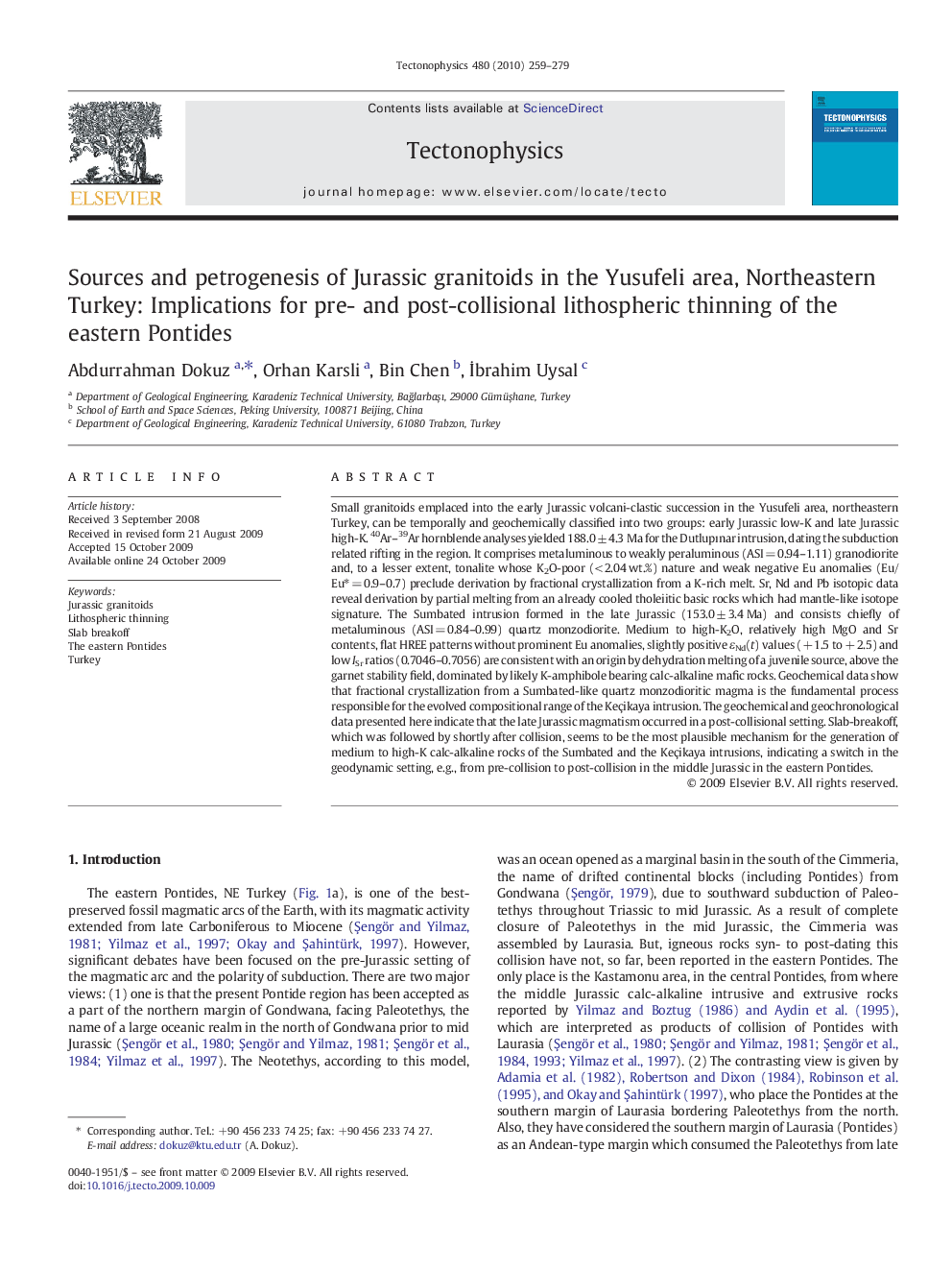| کد مقاله | کد نشریه | سال انتشار | مقاله انگلیسی | نسخه تمام متن |
|---|---|---|---|---|
| 4693684 | 1636876 | 2010 | 21 صفحه PDF | دانلود رایگان |

Small granitoids emplaced into the early Jurassic volcani-clastic succession in the Yusufeli area, northeastern Turkey, can be temporally and geochemically classified into two groups: early Jurassic low-K and late Jurassic high-K. 40Ar–39Ar hornblende analyses yielded 188.0 ± 4.3 Ma for the Dutlupınar intrusion, dating the subduction related rifting in the region. It comprises metaluminous to weakly peraluminous (ASI = 0.94–1.11) granodiorite and, to a lesser extent, tonalite whose K2O-poor (< 2.04 wt.%) nature and weak negative Eu anomalies (Eu/Eu⁎ = 0.9–0.7) preclude derivation by fractional crystallization from a K-rich melt. Sr, Nd and Pb isotopic data reveal derivation by partial melting from an already cooled tholeiitic basic rocks which had mantle-like isotope signature. The Sumbated intrusion formed in the late Jurassic (153.0 ± 3.4 Ma) and consists chiefly of metaluminous (ASI = 0.84–0.99) quartz monzodiorite. Medium to high-K2O, relatively high MgO and Sr contents, flat HREE patterns without prominent Eu anomalies, slightly positive εNd(t) values (+ 1.5 to + 2.5) and low ISr ratios (0.7046–0.7056) are consistent with an origin by dehydration melting of a juvenile source, above the garnet stability field, dominated by likely K-amphibole bearing calc-alkaline mafic rocks. Geochemical data show that fractional crystallization from a Sumbated-like quartz monzodioritic magma is the fundamental process responsible for the evolved compositional range of the Keçikaya intrusion. The geochemical and geochronological data presented here indicate that the late Jurassic magmatism occurred in a post-collisional setting. Slab-breakoff, which was followed by shortly after collision, seems to be the most plausible mechanism for the generation of medium to high-K calc-alkaline rocks of the Sumbated and the Keçikaya intrusions, indicating a switch in the geodynamic setting, e.g., from pre-collision to post-collision in the middle Jurassic in the eastern Pontides.
Journal: Tectonophysics - Volume 480, Issues 1–4, 5 January 2010, Pages 259–279